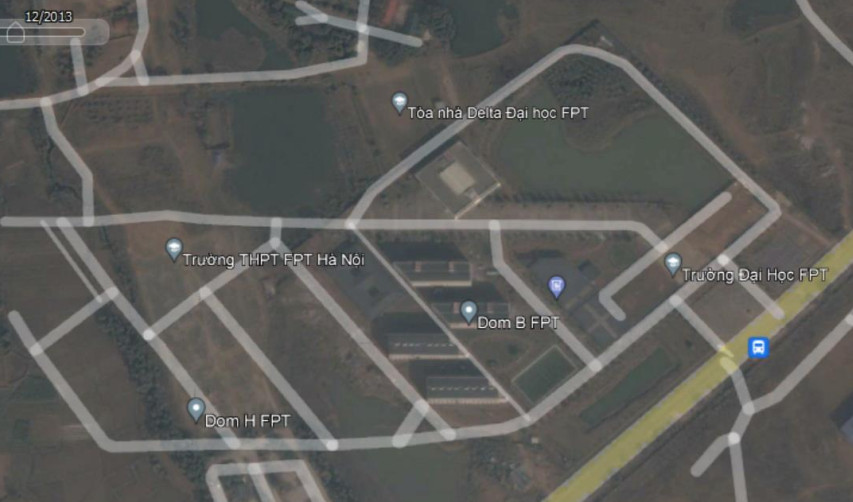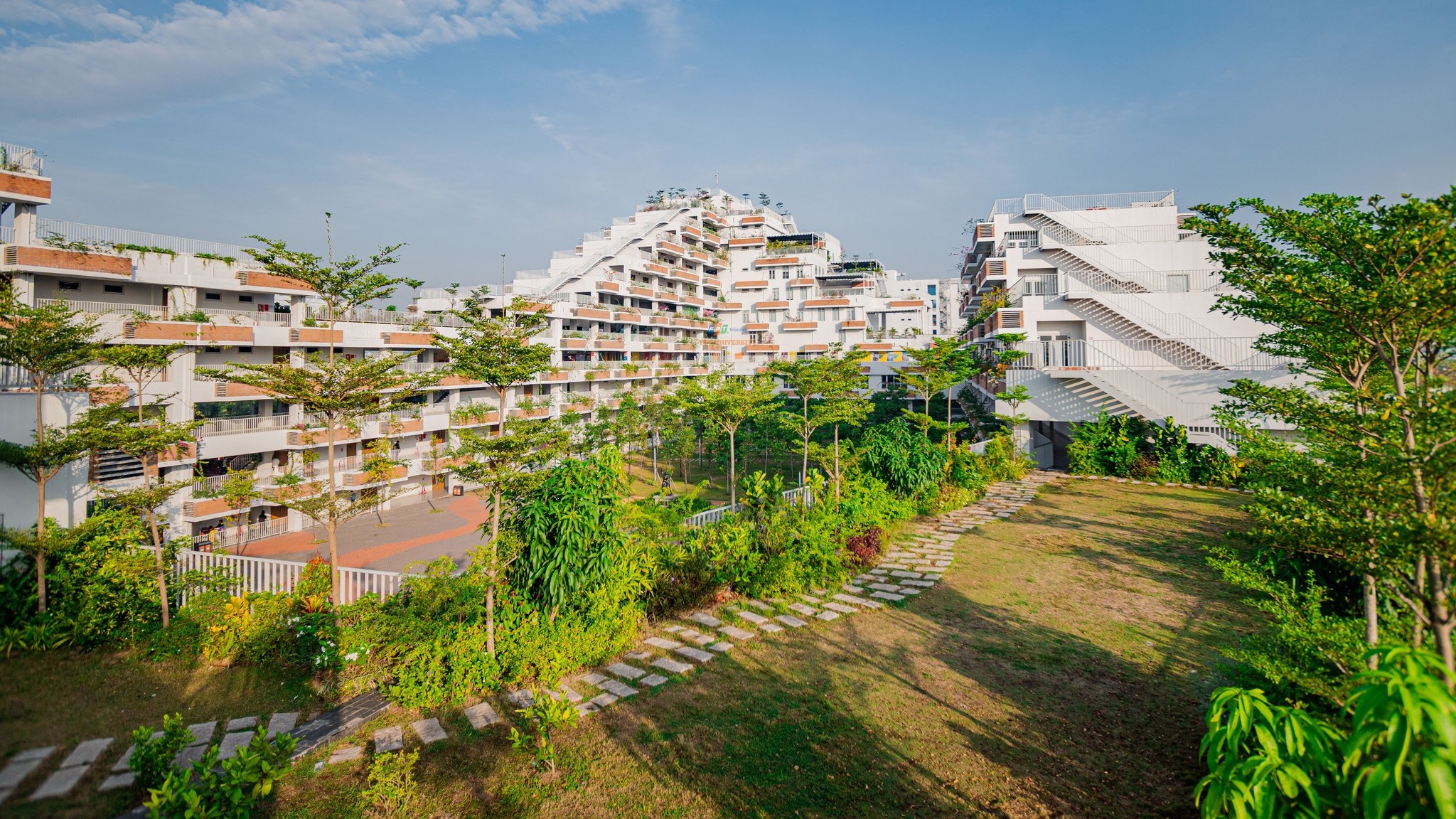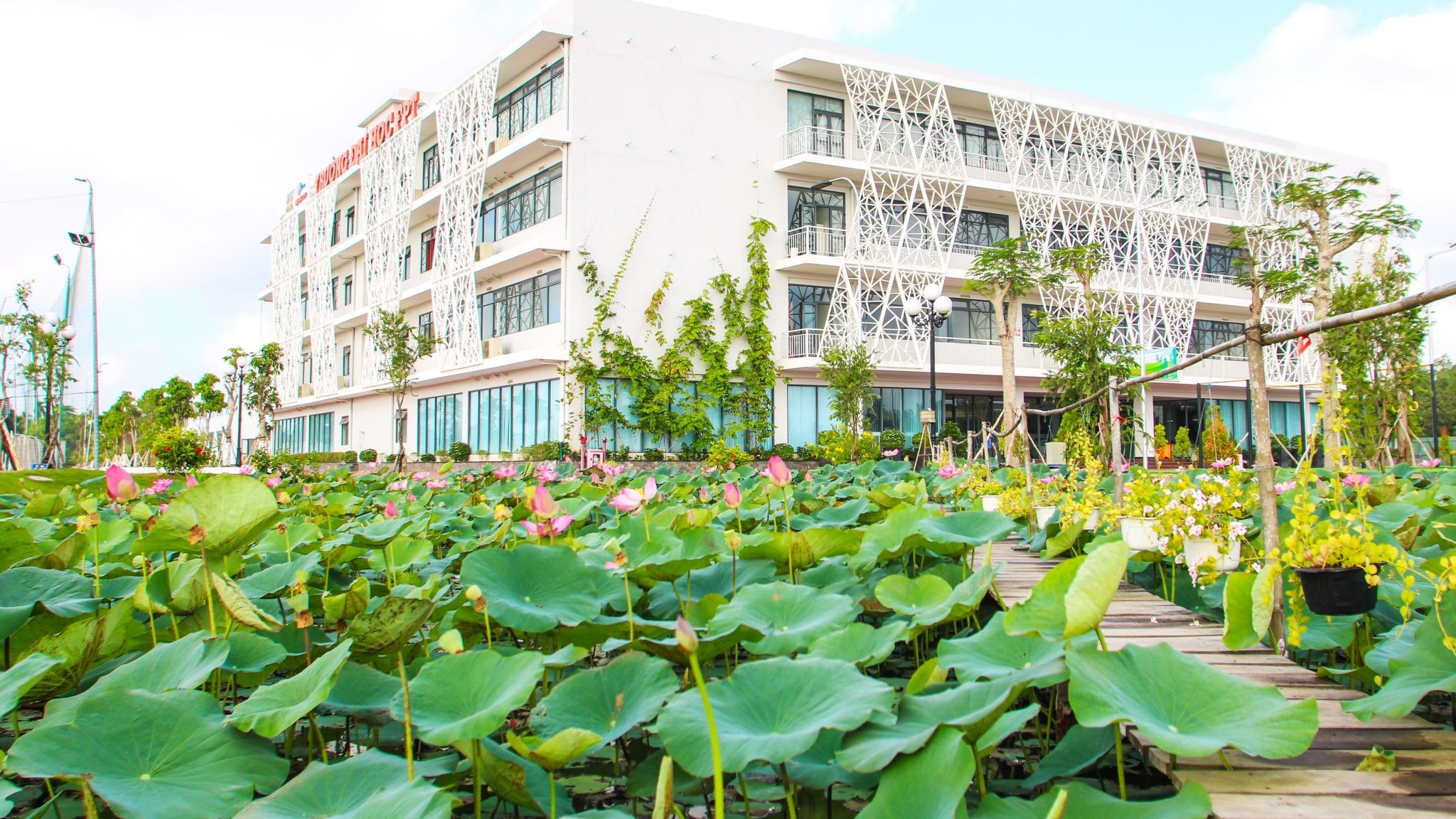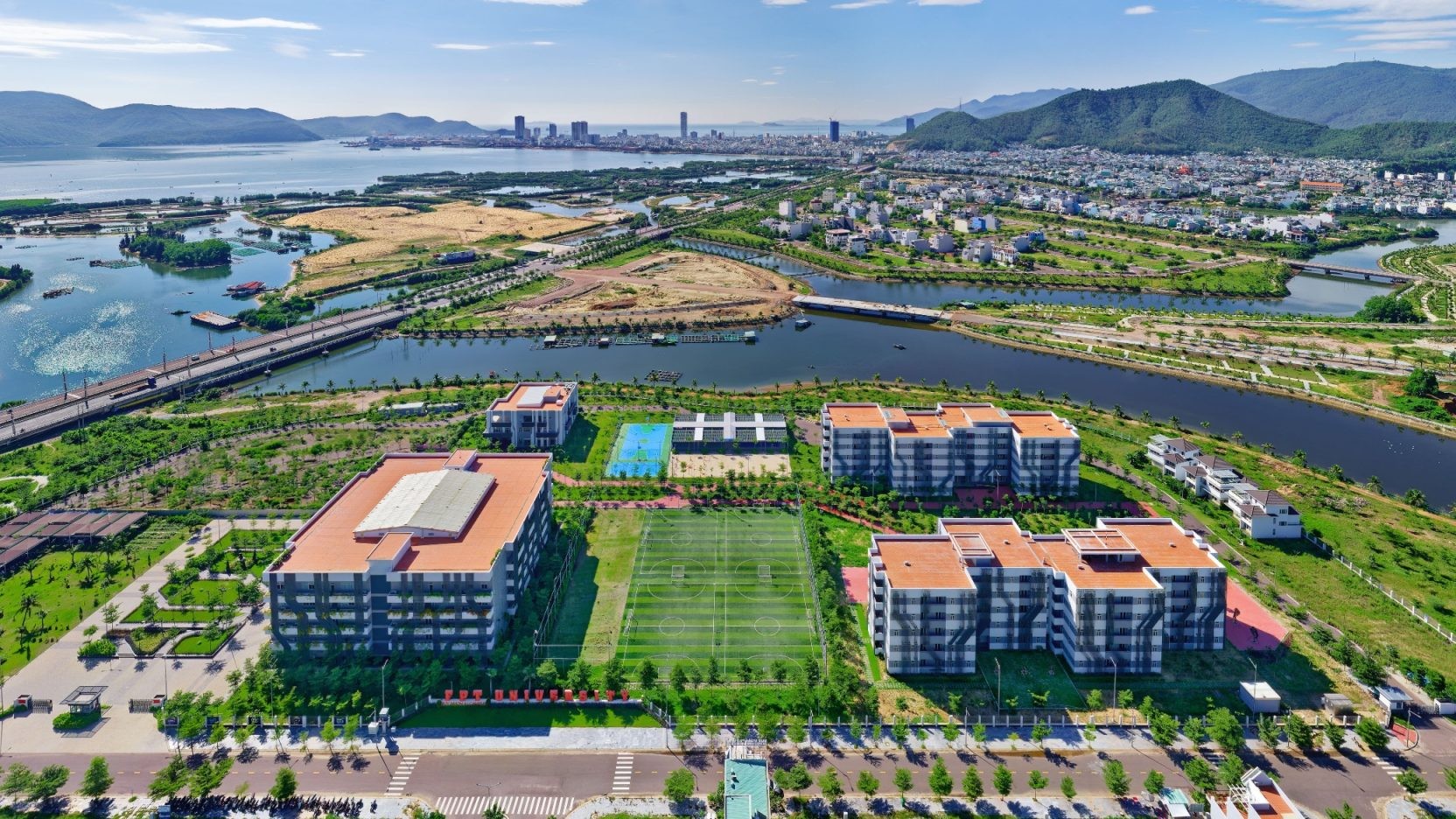Part 1: Finding Land for the School
FPT University was established on September 8, 2006, under Decision No. 208/2006/QĐ-TTg by the Prime Minister. With the mission of providing technology human resources for FPT Corporation and the nation, the FPT University Construction Department was formed to identify and develop suitable land for campus construction. Together with the leadership of FPT Education, the team began searching for land to build the university
From the beginning, the university adopted a “Brownfield-First” approach, prioritizing the redevelopment of previously used or the conversion of existing urban areas rather than consuming new greenfield spaces.
The first campus of FPT University was established in Hoa Lac Hi-Tech Park, located at Km29 Thang Long Boulevard, Thach That District, Hanoi — approximately 30–35 km from the city center. The site was originally designated for an industrial park of Hanoi City. FPT University, together with FPT Corporation, decided to build the first campus here to train future technology engineers. In the following years, many large corporations came to invest in Hoa Lac Hi-Tech Park. Today, FPT University has become a beautiful green campus through careful planning of green spaces, interconnected buildings, and water bodies.

In Ho Chi Minh City, the leadership and construction team of FPT Education focused on development projects in the eastern part of the city, namely District 9 (now part of Thu Duc City). The land used for the FPT University campus had previously been occupied by small-scale, low-efficiency production facilities and was included in the city’s plan for developing a new industrial and educational zone.

The Da Nang Campus was built on sandy coastal land near the sea, located in the southern part of Da Nang City, adjacent to Quang Ngai Province.
Part 2: Green Buildings
Today, FPT University operates five campuses stretching from North to South Vietnam, in Hanoi, Da Nang, Quy Nhon, Ho Chi Minh City, and Can Tho. Each campus embodies the university’s philosophy of green architecture, where innovative design is harmoniously integrated with the natural landscape to create sustainable, inspiring learning environments.
When visitors arrive at FPT University Hanoi, they are welcomed by the campus’s expansive green spaces. At its center stands the Administrative Building, elegantly shaped like a dragon rising amidst the greenery. Featuring a distinctive hollow-block design, the seven-story building offers a total usable area of 11,065 m². Its innovative and sustainable architecture was recognized with an award at the 42nd World Architecture Awards.

The FPT University Ho Chi Minh City campus is located in the HCM City Hi-Tech Park. It sits on a 22,500-square-meter plot among the skyscrapers of Ho Chi Minh City, southern Vietnam.

FPT University Da Nang is built on an area of 5.1 hectares. The dynamic and unique design in the famous central Vietnamese city is inspired by stacked books. All designs we choose are aimed at providing teachers and students with the greenest and most memorable teaching and learning environment.
Located at 600 Nguyen Van Cu (extended), An Binh Ward, Ninh Kieu District, Can Tho City, FPT Can Tho campus has become an architectural highlight in the Mekong Delta, accommodating over 5,000 students.

Part 3: The Dream of the Largest Artificial Intelligence Center in Vietnam on Thi Nai Lagoon, Quy Nhon Bay
Quy Nhon is a small, sparsely populated city in Binh Dinh province. With the expectation of turning this city into the largest AI center in Vietnam, FPT Corporation established the fifth FPT University campus. We chose to build the FPTU Quy Nhon campus right on the Thi Nai Lagoon, next to the seaport of Quy Nhon Bay. This is an area that the city has reclaimed and re-planned to become the largest artificial intelligence center in Vietnam.

Our construction and reclamation efforts paid off. After three years, we have a beautiful campus overlooking Quy Nhon Bay.

The FPTU Quy Nhon campus also has housing for young single lecturers who moved here for education. They are provided with free housing during their teaching tenure at FPTU Quy Nhon.

In the Thi Nai swamp area, the Quy Nhon City People’s Committee cooperates and supports FPTU in planning the An Phu Thinh affordable housing area for lecturers and FPT workers alongside other commercial and premium housing areas. This helps young FPTU lecturers and their families realize the dream of owning a home at prices 30% lower than the market. A new urban area is forming here along with the FPTU campus.


